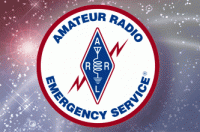|
Welcome,
Guest
|
TOPIC:
The Modern ARES Ham 10 months 4 weeks ago #879
|
Jack Ciaccia, WM0G,
Assistant Director for Emergency Communications & Public Service New England Division Source: New England Beacon (May 2023) - This is an excerpt from a much more detailed article that also lays out Jack's amazing experience in ARES and ARRL related positions. (Link at bottom) I was recently appointed by Fred, AB1OC, to help the many amateur radio EmComm organizations in New England. My charter includes ARES, Traffic Handling, SKYWARN, RACES, and Public Service organizations. The plan is to: - Encourage participation in EmComm & Public Service activities. - Encourage the development and sharing of Training Programs. - Encourage developing and sharing resource contact information, training data, and preparedness exercise information. - Provide for publicizing these programs across the division and the ARRL. Here is something I wrote a few years ago concerning the future of ARES: ARES, as we know it, is changing dynamically and will continue to do so in the coming years. Our served agencies will continue to define our organization, mission, and purpose, and our future will depend on our mission capabilities and operators' training, qualifications, and credentials. It used to be that all you had to do in an emergency was to be a Good Samaritan ham radio operator with a handi-talkie on your belt, show up at the EOC and get assigned to assist with some communication needs – pretty simple. And they usually did a good job! Why was that? Because our served agencies had radios and a communications system that typically needed more flexibility and interoperability to communicate in multi-agency or multi-location events. What changed? The first big answer to that is that 9-11 happened. Ham radio played a huge role in maintaining communication in a nightmarish interoperability scenario when the typical telephone and land mobile system infrastructure was either gone or overloaded. Federal, State, and local agencies said radio interoperability issues and land-based communication systems constructed on vast and complex communications infrastructures for our first responders would have to change, which made the guys with the "bat-wings" smile a lot. These new systems would create a need for more modern communications devices, creating more "bat-wing" smiles. What else happened? Hurricane Katrina happened – same issues as with 9/11. Then the Haiti earthquake occurred – more of the same problems, but even worse, complicated by the lack of a structured communication system. So, what happened? In both cases, ham radio was integral in getting some communications up and running when the existing infrastructure was gone or overloaded. The onslaught of multiple agencies arrived at these disasters with interoperability issues, further exasperating the glaring weaknesses of the old or non-existent communication systems. The Government poured a massive amount of $$$ into the problem. The $$$ went to DHS, FEMA, State EOCs, and others. Eventually, some of this $$$ even found its way to local ARES groups in a splendid example of the "trickle down" theory. But now that those ARES groups accepted the Federal or State $$$, Guess what? The agencies where the $$$ came from have defined the new rules that those ARES groups will play under from here on out. How does that affect ARES? More reliable communication systems are available today to our served agencies. With just a handi-talkie on his belt, that Good Samaritan ham is now useless to them. The EOCs and the OEMs want and expect radio operators trained and credentialed. The modern ARES ham will have ICS and NIMS certifications, provide valued skills, possess modern radio equipment, and have accessibility to modes and frequencies that our served agencies cannot access. The new requirements will cause a paradigm shift in how ARES members train and respond. Do you remember the large VHF /UHF repeater groups that provided Autopatch capability to hams? And, do you remember what happened to their membership numbers once the cell phone became omnipresent? The ARES groups that adapt and conform to these changes will survive and thrive. - The others that refuse to change may go the way of the Dodo Bird. SOURCE: nediv.arrl.org/wp-content/uploads/2023/0...acon-May-2023-v3.pdf |
|
Please Log in or Create an account to join the conversation.
Last edit: by WA1SFH.
|
Time to create page: 0.149 seconds
